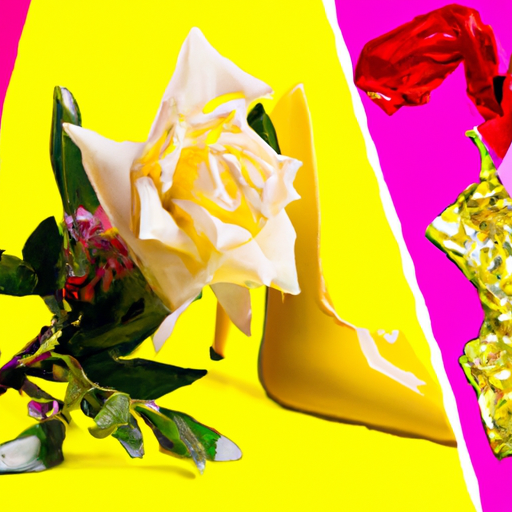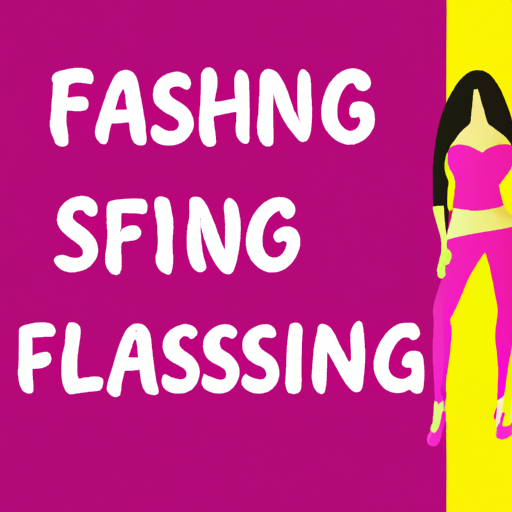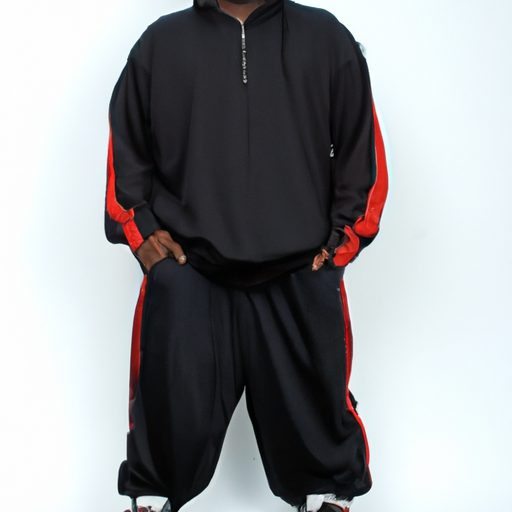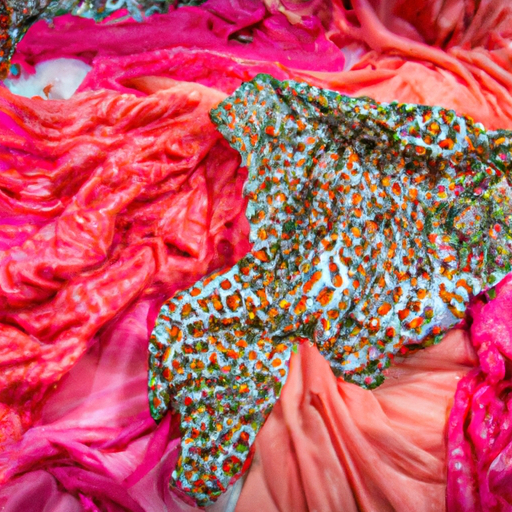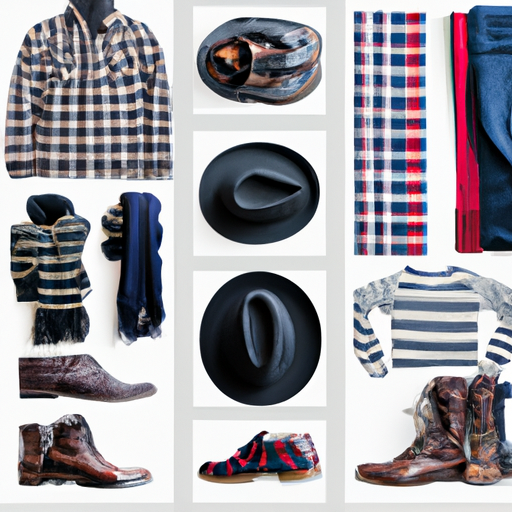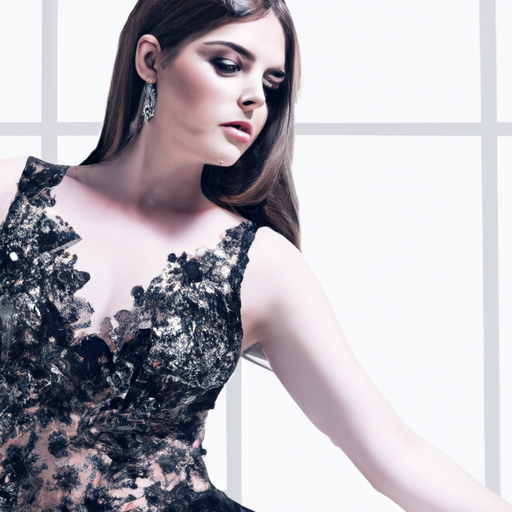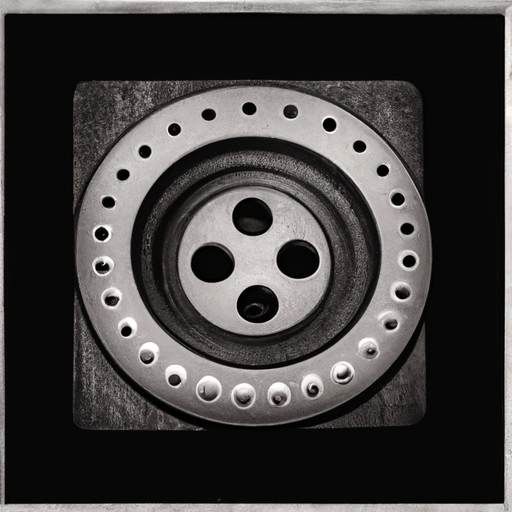How Long Do Fashion Trends Last?
You know how sometimes you buy into a trendy fashion item, only to find that it’s out of style before you even get a chance to wear it? It’s frustrating, isn’t it? Well, you’re not alone. The world of fashion can be a fickle one, and staying up-to-date with the latest trends is no easy feat. So, have you ever wondered just how long these fashion trends actually last? From the rise of the mini skirt to the reign of skinny jeans, this article will delve into the intriguing lifespan of these ever-changing style statements. Get ready to uncover the secrets behind the longevity (or lack thereof) of fashion trends.
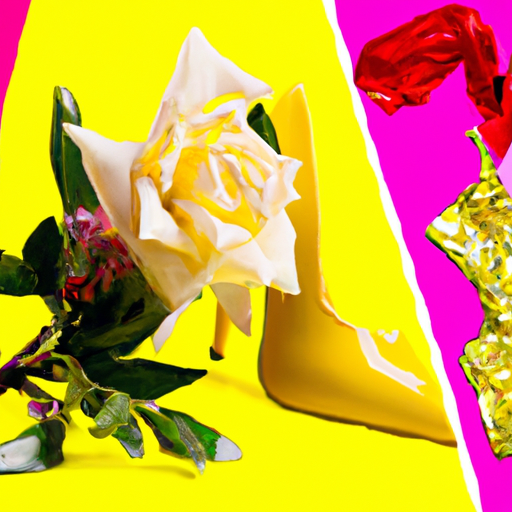
Table of Contents
Factors Influencing Fashion Trends
When it comes to the ever-changing world of fashion, several factors play a significant role in shaping and determining the current trends. From celebrity influences to consumer demand, a multitude of factors work together to create the fashion landscape we see today.
Celebrity Influence
One of the most significant factors influencing fashion trends is the influence of celebrities. Celebrities have the power to set trends and dictate what is considered fashionable. Whether it’s a trendy outfit worn on the red carpet or a casual street style look captured by paparazzi, celebrities have a sway over consumer behavior and can greatly impact the fashion industry.
When a well-known celebrity is seen wearing a particular brand or style, it instantly gains attention and becomes desirable among the masses. Their endorsement of a specific brand or trend can lead to a surge in sales and popularity, ultimately shaping and driving fashion trends.
Consumer Demand
Consumer demand is another crucial factor that influences fashion trends. The choices and preferences of consumers, who are the ultimate drivers of the fashion industry, play a significant role in shaping what is considered fashionable.
Fashion brands and designers continually strive to meet the demands and expectations of consumers by providing them with products that align with their tastes and desires. When a certain style or trend resonates with consumers, it gains momentum, and fashion brands respond by incorporating those elements into their collections.
Consumers have the power to drive trends by expressing their preferences through their purchasing decisions. Their demand for sustainable, inclusive, and ethical fashion has led to a shift in the industry towards more sustainable practices and diverse representation in fashion marketing.
Social Media
Social media has revolutionized the way fashion trends are created, consumed, and shared. Platforms like Instagram, TikTok, and Pinterest have become vital influencers in the fashion industry, shaping trends through the power of visual content and user-generated recommendations.
In today’s digital age, anyone can become a fashion influencer, documenting their personal style and sharing fashion inspiration with a global audience. The accessibility of social media platforms has democratized fashion, allowing individuals from various backgrounds to showcase their unique fashion sense and gain a following.
Fashion influencers and bloggers have become indispensable in driving trends, as their recommendations and outfit inspirations resonate with their followers. The viral nature of social media can quickly propel a trend into the mainstream, leading to widespread adoption and influencing the direction of fashion.
Economic Factors
Economic factors, such as the state of the economy, income levels, and financial stability, also influence fashion trends. During times of economic prosperity, consumers may be more willing to spend on luxury and high-end fashion items, leading to a rise in trends associated with luxury brands.
Conversely, during times of economic downturn, consumers may opt for more affordable and practical fashion choices, favoring trends that reflect their cost-consciousness. Economic factors can dictate the popularity of certain price points, materials, and styles within the fashion industry, shaping trends accordingly.
Seasons and Weather
The seasons and weather also play a significant role in influencing fashion trends. As the temperature changes, people naturally gravitate towards clothing that suits the climate, leading to seasonal fashion trends.
For example, during the summer, lightweight and breathable fabrics, bright colors, and vibrant patterns are popular choices. In contrast, during the winter, people tend to favor layering, cozy knits, and darker, more subdued tones. The shift in seasons prompts fashion brands and designers to create collections that reflect the prevailing weather conditions and meet the demands of consumers.
The weather also influences accessory trends, such as the popularity of sunglasses and hats during the summer or the need for scarves and gloves in colder months. Fashion adapts to the changing seasons and weather conditions, ensuring that consumers are comfortable and stylish throughout the year.
Fashion Trend Cycles
Fashion trends go through a cycle of emergence, growth, peak popularity, decline, and either obsolescence or revival. Understanding the different stages of trend cycles can provide insight into how long certain trends last and what factors influence their lifespan.
Microtrends
Microtrends are small-scale trends that emerge and fade quickly, typically lasting for a few weeks to a few months. They are often driven by niche communities, social media influencers, or subcultures, and may not gain mainstream popularity.
Microtrends are characterized by their specificity and limited reach, appealing to a small group of fashion-forward individuals. Examples of microtrends include unique accessories like statement earrings or bucket hats, as well as unconventional styling choices like mismatched prints or socks with sandals.
While microtrends may not have a long lifespan, their influence can be seen in the wider fashion landscape as they inspire designers and shape the aesthetic direction of the industry.
Short-term Trends
Short-term trends are slightly more enduring than microtrends, typically lasting for a few months to a year. They are often influenced by pop culture, runway shows, or fashion events, gaining widespread popularity and coverage.
Factors such as celebrity endorsements, fashion collaborations, or the emergence of a new designer can contribute to the rise of short-term trends. These trends often appear in fast-fashion retailers, allowing consumers to adopt them quickly and affordably.
Examples of short-term trends include athleisure wear, neon colors, or oversized blazers. They capture the zeitgeist of a particular moment but may lose momentum as new trends emerge.
Medium-term Trends
Medium-term trends have a longer lifespan compared to microtrends and short-term trends, lasting for one to three years. They often evolve over multiple seasons and become more deeply ingrained in the fashion industry.
Medium-term trends are influenced by a mix of factors, including consumer demand, designer collections, and cultural shifts. They have a broader appeal and can be seen in various market segments, from high-end fashion houses to affordable brands.
Examples of medium-term trends include wide-leg trousers, animal prints, or bohemian-inspired fashion. These trends capture the attention of consumers and continue to be relevant for several seasons, often becoming wardrobe staples.
Long-term Trends
Long-term trends have the most extended lifespan, lasting for several years or even decades. They transcend momentary popularity and become iconic elements of fashion history.
Factors influencing the longevity of long-term trends include their timelessness, versatility, and cultural significance. These trends often become synonymous with a particular era or subculture and remain relevant throughout the years.
Examples of long-term trends include the little black dress, denim jeans, leather jackets, striped shirts, and trench coats. These iconic pieces have stood the test of time and continue to be key elements in many wardrobes.
Fashion Trend Lifecycles
Understanding the lifecycle of fashion trends can further shed light on their duration and impact on the industry. Trends evolve and progress through distinct stages, each playing a significant role in their lifespan and ultimate fate.
Stage 1: Introduction
The introduction stage marks the birth of a new trend. It begins with the trend gaining initial recognition and visibility, often through fashion shows, runway presentations, or influential individuals wearing or endorsing the trend.
During this stage, early adopters embrace the trend, experimenting with incorporating it into their personal style. The introduction stage is crucial for setting the foundation and establishing the potential viability of the trend.
Stage 2: Growth
In the growth stage, the trend gains momentum and popularity, reaching a wider audience and becoming more accessible. It becomes more visible in the fashion market, with multiple brands and designers incorporating the trend into their collections.
During this stage, the trend becomes increasingly embraced by consumers, as they recognize its aesthetic appeal and potential for self-expression. It becomes more prevalent in retail stores and online platforms, allowing for wider consumer adoption.
Stage 3: Peak
The peak stage is characterized by the trend reaching its maximum popularity and saturation in the market. It becomes mainstream and widely embraced by consumers, celebrities, and influencers.
At this stage, the trend may become oversaturated, as it is replicated and reproduced by numerous fashion brands and retailers. The market becomes flooded with variations of the trend, and its novelty begins to wear off.
Stage 4: Decline
In the decline stage, the trend starts losing its prevalence and popularity. Consumers begin to move on to new trends, seeking novelty and something fresh. The decline in popularity may be gradual or rapid, depending on various factors such as the emergence of competing trends or changing consumer preferences.
During this stage, the trend may still have a loyal following or niche appeal, but it no longer dominates the mainstream fashion scene. The decline stage is a critical period for fashion brands and designers to assess the trend’s viability and make strategic decisions regarding its future.
Stage 5: Obsolescence or Revival
The final stage of a fashion trend is either obsolescence or revival. Some trends become outdated and fade into obscurity, no longer resonating with current consumer preferences. However, certain trends have the potential for revival, as fashion operates in cycles, and what was once deemed out of fashion can become trendy again.
The revivals of past trends often occur due to nostalgic influences or a reinterpretation of the trend to fit the current fashion landscape. Fashion brands and designers may reintroduce previous trends, incorporating contemporary elements and giving them a fresh appeal.
Factors Affecting the Length of Fashion Trends
Several factors can influence the length of fashion trends, determining how long they remain relevant and impactful within the industry.
Relevance
The relevance of a trend to the cultural, social, and political climate strongly affects its longevity. Trends that reflect societal changes, promote inclusivity, or address pressing issues tend to have a longer lifespan.
Relevant trends resonate with consumers by aligning with their values and aspirations. They tap into the spirit of the times and demonstrate an understanding of current tastes and preferences.
Consumer Adoption
The speed and extent of consumer adoption significantly impact the lifespan of a fashion trend. Trends that quickly gain widespread adoption can have a shorter lifespan as they become oversaturated and lose their novelty.
On the other hand, trends that have a slower adoption rate but maintain a loyal following can have a longer lifespan. The slow-burning nature of these trends allows for a more organic growth and sustained relevance.
Advertising and Marketing
Effective advertising and marketing strategies can propel a trend forward and extend its lifespan. Strategic campaigns and collaborations can increase the visibility and desirability of a trend, reaching a wider audience and prolonging its popularity.
Fashion brands and designers invest in marketing initiatives to create a buzz around their collections, generating anticipation and excitement. The way a trend is marketed and positioned can greatly influence its success and longevity.
Designer Influence
The influence of influential designers and fashion houses on trends cannot be overstated. Designers have the power to set the aesthetic direction of the industry, introduce new silhouettes and styles, and shape the overall fashion narrative.
When highly regarded designers incorporate a trend into their collections, it gains instant credibility and recognition. Designer endorsement can propel a trend into the mainstream, extending its lifespan as it becomes an integral part of the fashion landscape.
Societal Changes
Societal changes and shifts in cultural attitudes can affect the length of fashion trends. Trends that reflect or respond to significant societal changes tend to have a longer lifespan as they become part of a wider cultural movement.
For example, the increased awareness of sustainability and ethical fashion has led to a sustained demand for eco-friendly and socially responsible fashion. Trends aligned with these values continue to be relevant and impactful, driven by the increasing consciousness of consumers and the need for meaningful change.
Examples of Long-lasting Fashion Trends
While many fashion trends come and go, there are certain timeless pieces that have stood the test of time and remain relevant throughout the years. These long-lasting trends embody style, versatility, and cultural significance, making them beloved fashion staples.
Little Black Dress
The little black dress (LBD) is an iconic fashion staple that has been a mainstay in women’s wardrobes for decades. Introduced by Coco Chanel in the 1920s, the LBD represents timeless elegance and versatility. It can be dressed up or down, making it suitable for various occasions.
The LBD’s staying power lies in its simplicity and ability to adapt to changing fashion trends. It has become a symbol of sophistication and effortless style, transcending seasonal trends and remaining a fashion must-have.
Denim Jeans
Denim jeans are another long-lasting fashion trend that has become a wardrobe staple for people of all ages and genders. From classic blue jeans to various cuts and washes, denim jeans have evolved over the years but have never lost their appeal.
Denim jeans are versatile, durable, and comfortable, making them ideal for everyday wear. They can be dressed up with a blazer or dressed down with a casual t-shirt, making them suitable for various occasions.
The longevity of denim jeans can be attributed to their ability to adapt to different fashion eras and subcultures. Whether worn by cowboys, rebels, or fashion-forward individuals, denim jeans continue to be a timeless fashion trend.
Leather Jackets
Leather jackets have become synonymous with coolness and rebellion, making them a lasting fashion trend. With their roots in military and aviator attire, leather jackets have evolved into a fashion statement and a symbol of edginess.
Leather jackets offer a combination of style and practicality, keeping individuals warm while adding a touch of attitude to any outfit. Their versatility allows them to be paired with various garments, from jeans to dresses, making them a versatile wardrobe staple.
The association of leather jackets with subcultures like punk, rock, and moto culture has contributed to their longevity. While they may undergo slight design variations, leather jackets remain an unmistakable fashion trend that exudes timeless coolness.
Striped Shirts
Striped shirts have endured as a classic fashion trend, finding their place in both casual and formal wear. The timeless appeal of striped shirts lies in their simplicity, versatility, and ability to add visual interest to any outfit.
From timeless Breton stripes to pinstripes or bold horizontal stripes, these shirts offer endless styling possibilities. They can be paired with jeans for a casual look or paired with tailored trousers for a more polished ensemble.
Striped shirts have become an enduring fashion trend due to their adaptability to different fashion aesthetics and settings. Whether worn by fashion icons or everyday individuals, striped shirts continue to be a wardrobe staple that adds a touch of sophistication to any outfit.
Trench Coats
Trench coats have stood the test of time and remain a perennial fashion trend that transcends seasons. Originally designed for military use, trench coats have become synonymous with classic elegance and sophistication.
Trench coats are lightweight yet functional, making them ideal for transitional weather. Their timeless silhouette and neutral tones allow for versatility in styling, from casual to formal attire.
The enduring popularity of trench coats can be attributed to their ability to effortlessly elevate any outfit and suit various body types. They have become a fashion staple that exudes sophistication and never goes out of style.
Conclusion
Fashion trends are influenced by a variety of factors ranging from celebrity endorsements and consumer demand to social media and economic conditions. Understanding the different lengths and lifecycles of fashion trends provides valuable insights into the ever-changing nature of fashion.
Microtrends, short-term trends, medium-term trends, and long-term trends all contribute to the vibrant fashion landscape we see today. These trends progress through different stages, from introduction to decline, and are influenced by a variety of factors, including relevance, consumer adoption, advertising, and societal changes.
While trends come and go, there are certain fashion trends that endure the test of time. Examples such as the little black dress, denim jeans, leather jackets, striped shirts, and trench coats have become iconic pieces that remain a part of fashion history.
Fashion trends are a reflection of individual expression, cultural shifts, and the evolving tastes and preferences of consumers. As fashion continues to evolve, we can anticipate that new trends will emerge while some old ones will find their way back, creating an ever-cycling cycle of fashion trends.
